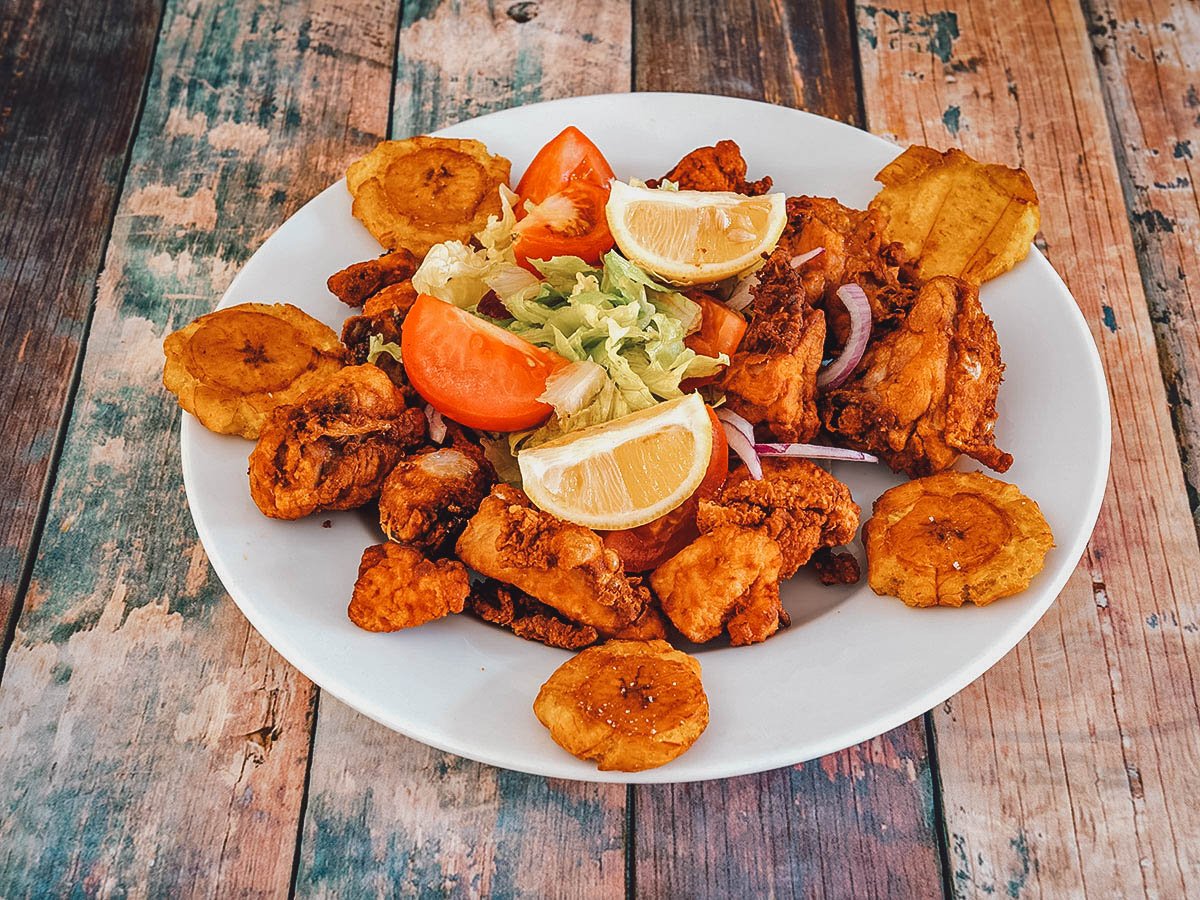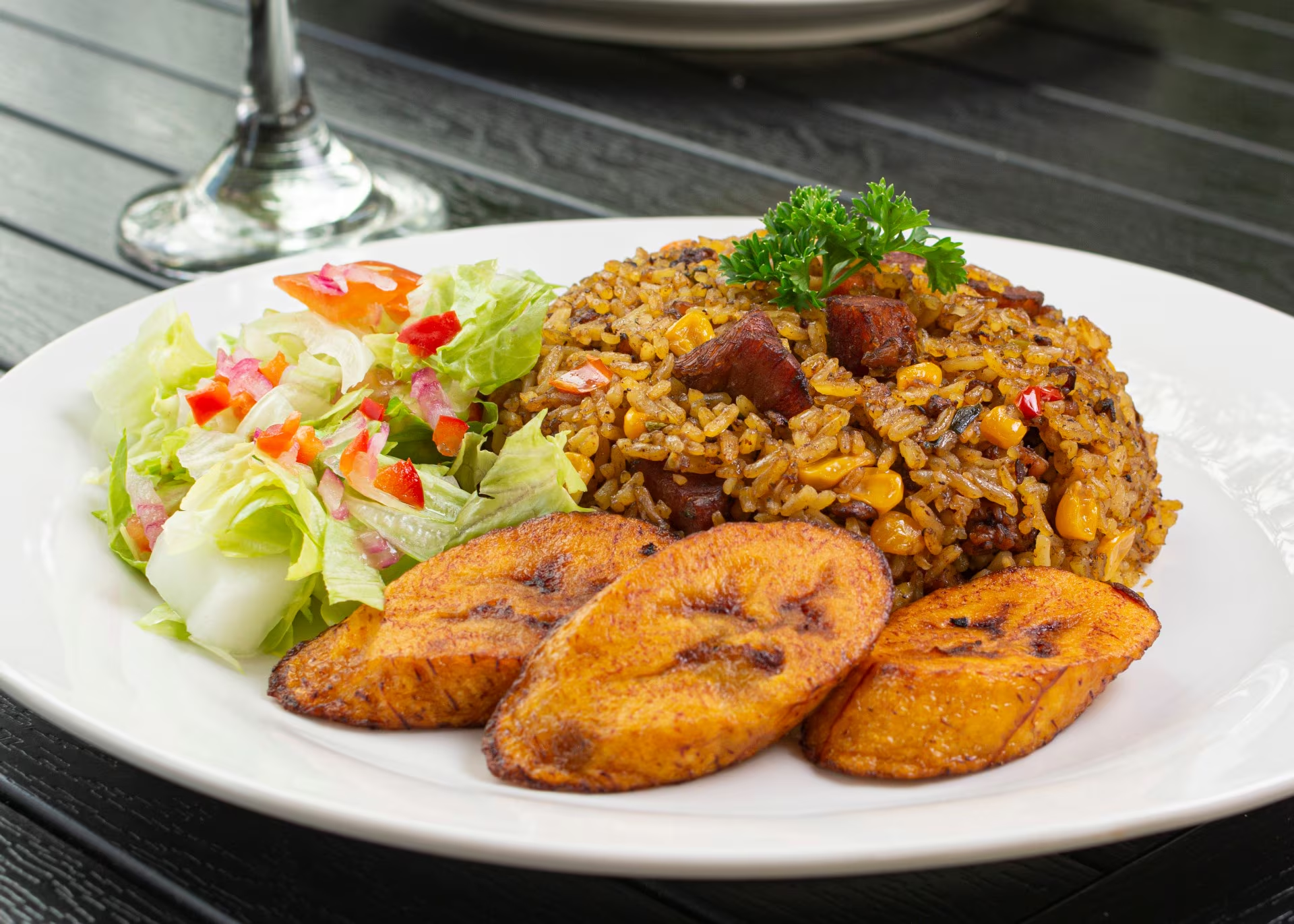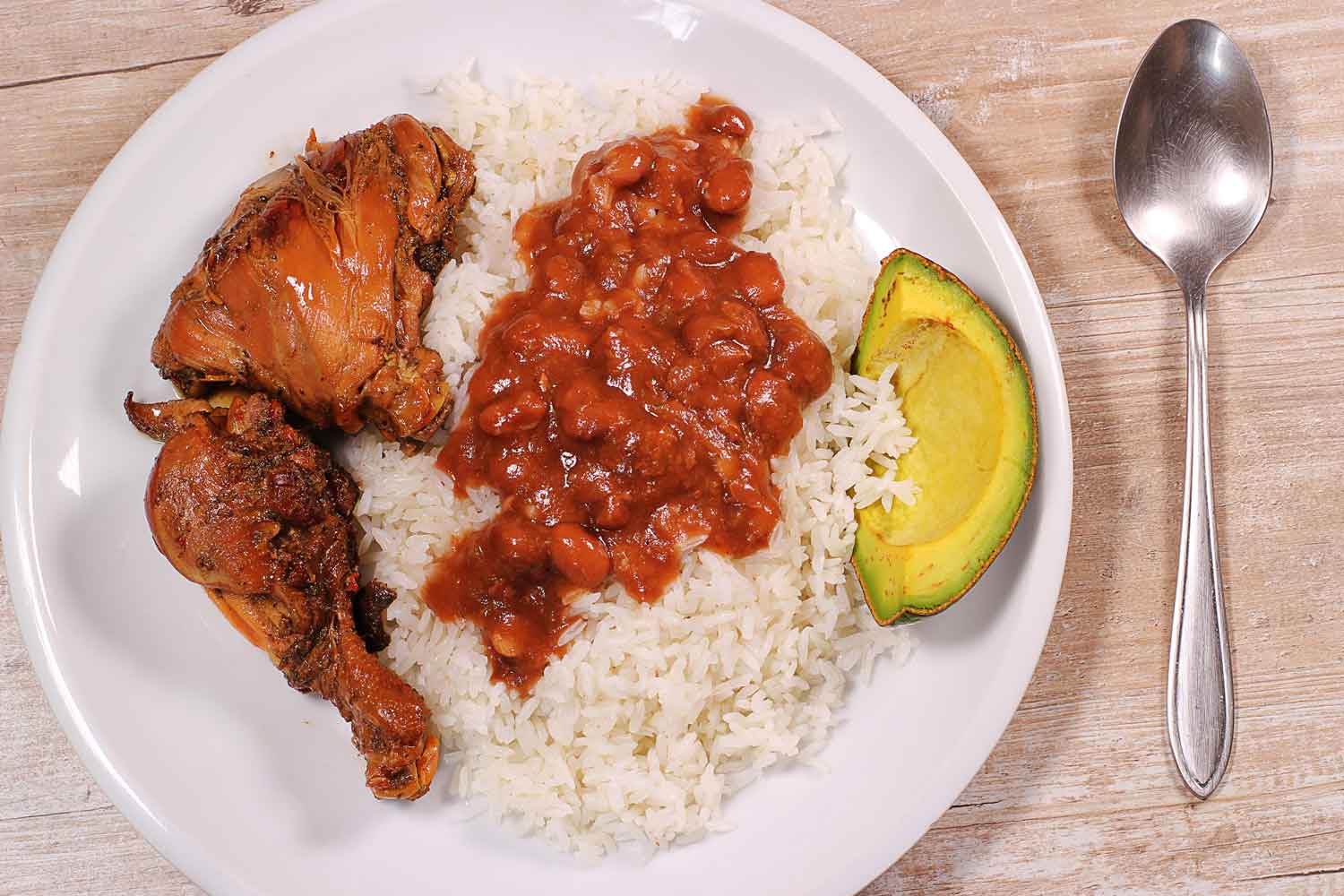Embark on a tantalizing adventure into the vibrant world of Dominican food, a captivating fusion of indigenous and Spanish influences that has tantalized taste buds for centuries. This culinary tapestry, woven with fresh ingredients and traditional techniques, is a testament to the rich cultural heritage of the Dominican Republic.
From humble beginnings to its global recognition, Dominican food has evolved into a culinary force to be reckoned with, showcasing the creativity and passion of its people.
History of Dominican Food

Dominican cuisine is a vibrant and flavorful reflection of the island nation’s rich cultural heritage. Its culinary roots are deeply intertwined with the indigenous Taíno people and the Spanish colonizers who arrived in the 15th century.
Indigenous Influences:
The Taíno people, who inhabited the island before European contact, had a profound impact on Dominican cuisine. They introduced cassava, a root vegetable that became a staple ingredient in many dishes. Other Taíno contributions include the use of spices such as achiote, annatto, and oregano, as well as cooking techniques like grilling and smoking.
Spanish Influences:
After the Spanish arrived in 1492, they brought with them their own culinary traditions, which gradually blended with the indigenous cuisine. Spanish ingredients such as rice, wheat, and olive oil became integral to Dominican dishes. The use of meat, particularly pork, also increased under Spanish influence.
Timeline of Key Events:
- 1492:Spanish arrival and introduction of European ingredients.
- 16th century:Rise of sugar production and the introduction of African slaves, who brought their own culinary traditions.
- 19th century:Dominican independence and the influx of immigrants from other Caribbean islands, further diversifying the cuisine.
- 20th century:Dominican immigration to the United States and other countries, spreading Dominican cuisine internationally.
Role of Dominican Immigration:
Dominican immigration has played a significant role in spreading Dominican cuisine around the world. In the United States, Dominican restaurants and grocery stores have become common in many cities, introducing American diners to the flavors of the Dominican Republic. Dominican chefs have also gained recognition for their innovative and authentic interpretations of traditional dishes.
Staple Ingredients
Dominican cuisine is renowned for its vibrant flavors and hearty dishes, which are heavily influenced by the country’s rich cultural heritage. Staple ingredients play a crucial role in shaping the unique culinary landscape of the Dominican Republic.
Rice
Rice is a fundamental component of Dominican cooking, serving as the base for many traditional dishes. It is a versatile grain that provides essential carbohydrates, vitamins, and minerals. Rice is commonly used in dishes such as “arroz con pollo” (chicken with rice), “locrio” (stewed rice with meat and vegetables), and “moro de habichuelas” (rice with beans).
Beans
Beans are another essential ingredient in Dominican cuisine, offering a rich source of protein, fiber, and essential nutrients. Common varieties used include red beans, black beans, and kidney beans. Beans are often cooked in stews, soups, and as a side dish.
Popular dishes featuring beans include “sancocho” (meat and vegetable stew), “habichuelas con dulce” (sweet beans), and “mangu” (mashed plantains with beans).
Plantains
Plantains are a type of banana that is widely used in Dominican cooking. They are a versatile ingredient, serving both as a savory and sweet component. Plantains are rich in potassium, fiber, and vitamins. They are often fried, boiled, or mashed and used in dishes such as “tostones” (fried plantain slices), “mangú” (mashed plantains), and “pastelón” (plantain lasagna).
Meats
Meat plays a significant role in Dominican cuisine, providing a source of protein and flavor. Common meats used include chicken, beef, pork, and goat. Meat is often grilled, stewed, or fried and incorporated into dishes such as “pollo guisado” (stewed chicken), “carne guisada” (stewed beef), and “lechón asado” (roasted pork).
Traditional Dishes

Dominican cuisine is a vibrant and flavorful blend of Spanish, African, and indigenous Taino influences. It features a wide array of traditional dishes that are deeply rooted in the country’s history and culture.
Here is a menu featuring a variety of traditional Dominican dishes, organized into categories:
Appetizers, Dominican food
- Tostones:Twice-fried green plantains served with a dipping sauce.
- Empanadas:Fried or baked turnovers filled with various fillings, such as meat, cheese, or vegetables.
- Yuca Frita:Fried cassava root served with a variety of dipping sauces.
Entrees
- Sancocho:A hearty stew made with various meats, vegetables, and root vegetables.
- Pernil Asado:Roasted pork shoulder seasoned with garlic, oregano, and other spices.
- Pollo Guisado:Chicken stew cooked in a flavorful tomato sauce.
- Mofongo:Mashed plantains mixed with garlic, pork cracklings, and other ingredients.
Sides
- Arroz con Gandules:Rice cooked with pigeon peas, a staple side dish in Dominican cuisine.
- Ensalada Verde:Green salad made with lettuce, tomatoes, cucumbers, and onions.
- Habichuelas Guisadas:Stewed red beans, a popular side dish in Dominican homes.
Desserts
- Habichuelas con Dulce:Sweetened red beans served as a dessert.
- Tres Leches Cake:A moist sponge cake soaked in three different types of milk.
- Flan:A custard dessert with a caramel sauce.
Cooking Techniques
Dominican cuisine showcases a diverse array of cooking techniques, each contributing to the vibrant flavors and textures of its dishes.
Stewing is a cornerstone of Dominican cooking, creating tender and flavorful meats and vegetables. Dishes like sancocho, a hearty meat stew, are simmered for hours to develop a rich and complex broth.
Frying
Frying is another popular technique, used to create crispy and golden-brown exteriors. Fried plantains, known as tostones, are a staple side dish, while chicharrón, crispy fried pork belly, adds a savory touch to many dishes.
Grilling
Grilling is employed to impart a smoky flavor to meats and seafood. Grilled chicken, known as pollo asado, is a beloved dish, marinated in flavorful spices and grilled to perfection.
These cooking techniques, when combined with the use of fresh ingredients and traditional seasonings, result in the authentic and delectable flavors that define Dominican cuisine.
Regional Variations
The Dominican Republic is a diverse country with a rich culinary tradition that varies from region to region. Geography, climate, and local traditions have all played a role in shaping the unique flavors and dishes found in different parts of the country.
Northern Region
The northern region of the Dominican Republic is known for its mountainous terrain and lush vegetation. The cuisine in this region is influenced by the indigenous Taíno people, as well as by Spanish, African, and French settlers. Some of the unique dishes from the northern region include:
- Sancocho: A hearty stew made with meat, vegetables, and herbs.
- La Bandera: A traditional Dominican dish consisting of rice, beans, and stewed meat.
- Chicharrón: Fried pork rinds.
Eastern Region
The eastern region of the Dominican Republic is known for its sugarcane plantations and cattle ranches. The cuisine in this region is influenced by the African and Haitian populations that have settled in the area. Some of the unique dishes from the eastern region include:
- Mofongo: A mashed plantain dish served with meat or seafood.
- Yaroa: A Dominican version of a Cuban sandwich, made with roasted pork, ham, and cheese.
- Habichuelas con dulce: A sweet bean soup made with coconut milk.
Southern Region
The southern region of the Dominican Republic is known for its beautiful beaches and fishing villages. The cuisine in this region is influenced by the seafood and tropical fruits that are abundant in the area. Some of the unique dishes from the southern region include:
- Pescado con coco: Fish cooked in coconut milk.
- Langosta: Lobster.
- Mango sticky rice: A dessert made with sticky rice, mango, and coconut milk.
Central Region
The central region of the Dominican Republic is known for its fertile valleys and coffee plantations. The cuisine in this region is influenced by the Spanish and French settlers who have lived in the area. Some of the unique dishes from the central region include:
- Locrio: A rice dish made with meat, vegetables, and spices.
- Empanadas: Fried or baked pastries filled with meat, cheese, or vegetables.
- Pasteles en hoja: Banana leaf-wrapped tamales.
Modern Interpretations: Dominican Food

In the contemporary culinary landscape, Dominican chefs are embracing innovative techniques and ingredients to reimagine traditional dishes and create modern interpretations of Dominican cuisine.
These chefs are blending traditional flavors with global culinary trends, incorporating molecular gastronomy, sous vide cooking, and fusion cuisine to elevate Dominican gastronomy.
Examples of Contemporary Dominican Dishes
- Chicharrón de Pollo Confit: Crispy fried chicken skin confit in duck fat, served with a savory plantain purée.
- Mofongo de Yuca con Camarones al Ajillo: Mashed plantains with sautéed shrimp in garlic and olive oil.
- Ceviche de Mango y Piña: A refreshing ceviche made with mango, pineapple, and a citrus marinade.
These contemporary dishes showcase the versatility and adaptability of Dominican cuisine, while preserving its traditional flavors and ingredients.
Q&A
What are the staple ingredients in Dominican cooking?
Dominican cuisine relies heavily on rice, beans, plantains, and meats, each contributing unique flavors and nutritional value to the dishes.
How has Dominican food evolved over time?
Dominican food has undergone significant evolution, incorporating modern techniques and ingredients while preserving traditional flavors, resulting in a vibrant and dynamic culinary landscape.
